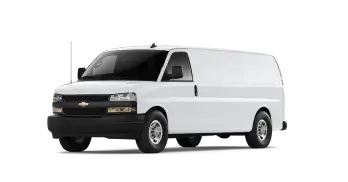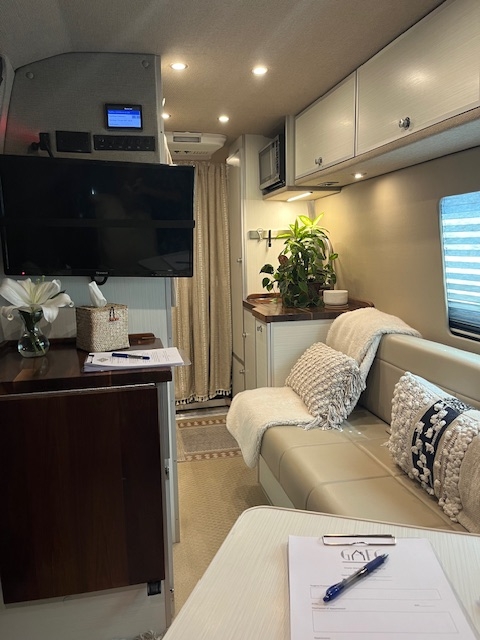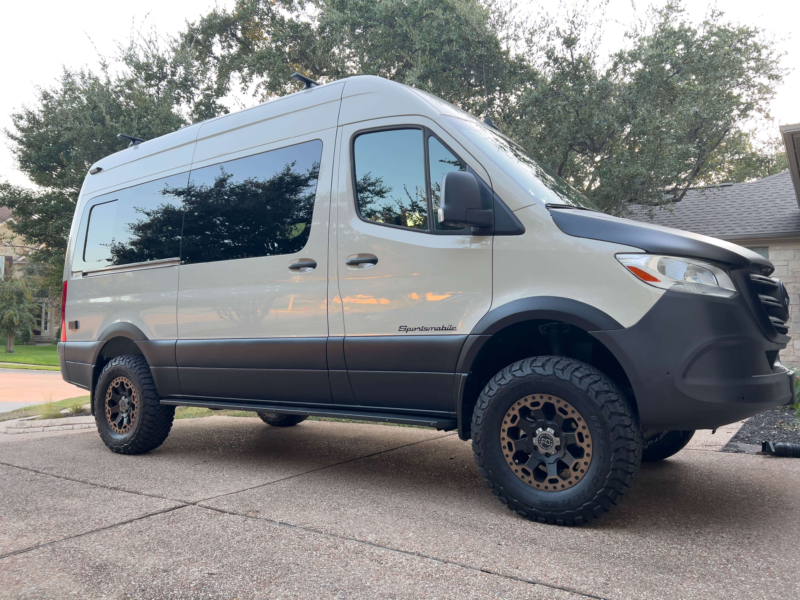Designing Accessible Vans: Custom Mobility Solutions for Every Need
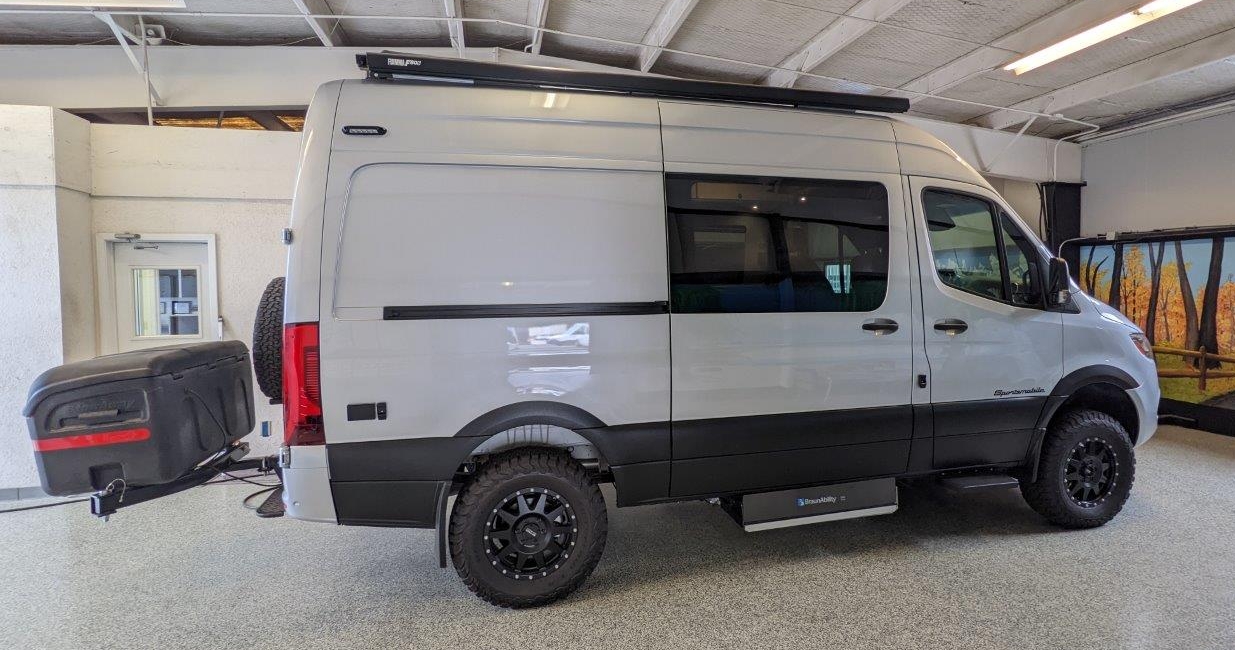
At Sportsmobile, we believe that the joy of travel should be accessible to everyone. One of the most rewarding aspects of our work is crafting custom accessibility vans that allow individuals with physical limitations to experience the freedom of the open road.
Each person’s mobility needs are unique, which is why a custom van conversion offers an ideal solution. Unlike off-the-shelf mobility options, a full conversion van goes beyond transportation—it’s a versatile vehicle for road trips, camping, and off-grid adventures.
When designing an accessibility van, many customers come in with an idea, but the real magic happens in the details. Our design consultants work closely with each client, focusing on two critical questions that shape the entire process:
- How will you get into the vehicle?
- How will you transfer to the cab?
The answers to these questions determine key decisions about the vehicle type, interior layout, and, most importantly, the mobility equipment installed to meet your needs.
How Are You Getting Into the Vehicle?
One of the most important decisions when designing your accessible van is choosing the right lift. For customers using wheelchairs or motorized scooters, access solutions are paramount, and each type of lift has different technical considerations and impacts on the overall design of the van. Here’s a detailed look at the four most common lift options.
Single Arm Lift
A single arm lift uses a single arm to raise and lower the platform and is mounted inside the van, adjacent to the sliding side door. The single post design offers advantages, including increased clearance for the side door entry and a compact footprint that leaves more room inside the vehicle. Some models come with bi-fold or tri-fold platforms, which allow passengers to use the side door when the lift is folded.
Key Benefits:
-More side-door access for other passengers due to the single post.
-Allows for the front passenger seat to swivel without obstruction.
-Simple mechanical design makes it easy to maintain and service.
Drawbacks:
-The single arm limits the lift’s weight capacity, typically to around 600 pounds.
-Takes up some interior space when stowed, though less than double-arm models.
Vehicle Consideration:
The single arm lift is most compatible with mid-sized vans, such as the Ford Transit or Mercedes Sprinter, where maximizing interior space is a priority. This lift is ideal for users with manual wheelchairs or smaller scooters, but may not be suitable for heavier equipment.
Double Arm Lift
Double arm lifts use two arms to support a heavier-duty platform and is installed inside the vehicle behind the side door. These lifts are built for maximum strength and stability, making them the go-to solution for heavier motorized wheelchairs and scooters. With a weight capacity of up to 800 pounds, double arm lifts are designed to handle the most demanding mobility needs. However, the dual post design occupies more interior space and may restrict movement within the van. Some models feature bi-fold platforms to provide partial door access for passengers.
Key Benefits:
-High weight capacity, up to 800 pounds.
-Superior stability and durability, particularly for motorized mobility devices.
-Reliable for long-term, heavy-duty use.
Drawbacks:
-Takes up significant interior space.
-Prevents the front passenger seat from swiveling due to the two-post design, limiting ease of transfer.
-Higher cost compared to single arm lifts.
Vehicle Consideration:
Double arm lifts are best suited for larger vans like the Mercedes Sprinter or Dodge Promaster, where interior space is abundant. This lift is ideal for users with heavy-duty motorized wheelchairs or scooters. The larger footprint means careful planning is needed to balance interior space for passengers and cargo.
Under Vehicle Lift (UVL)
The Under Vehicle Lift is an innovative solution that mounts the lift under the vehicle, freeing up interior space entirely. When deployed, the lift platform slides out from beneath the van and raises to allow wheelchair access. This system is particularly advantageous in terms of space-saving, as it does not obstruct the side door or the interior. The UVL design allows full use of the front swivel seats and maximizes cabin space for passengers and cargo. However, it requires a vehicle with higher ground clearance to accommodate the lift.
Key Benefits:
-Frees up the entire interior of the van for passengers, cargo, or additional equipment.
-Does not obstruct access to the front swivel seats.
-Provides a clean, sleek appearance with no visible lift components inside the van.
Drawbacks:
-Requires higher ground clearance, making it incompatible with certain lower-profile van models.
-Tends to be more expensive due to its advanced design and installation requirements.
-May be more difficult to service, though this is improving as the technology becomes more widespread.
Vehicle Consideration:
UVLs are best suited for high-clearance vehicles like the Mercedes Sprinter 4×4 or Ford Transit. They are a great choice for users who prioritize interior space and need unrestricted access for multiple passengers. This lift is ideal for those who frequently travel with others and require flexible seating arrangements.
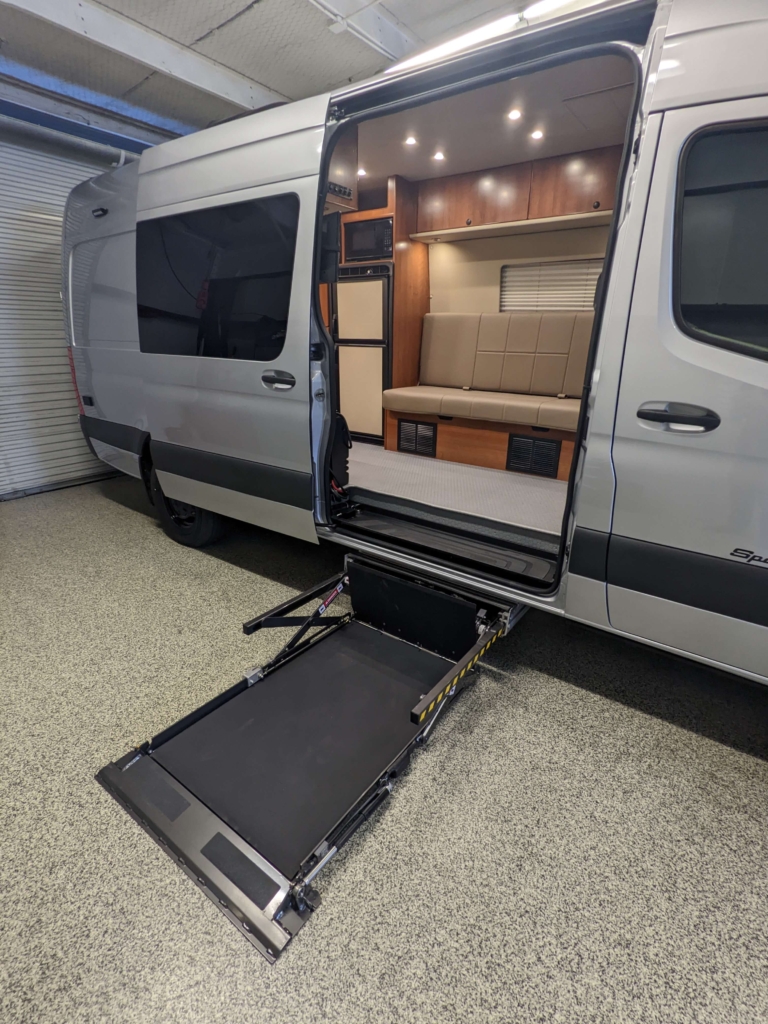
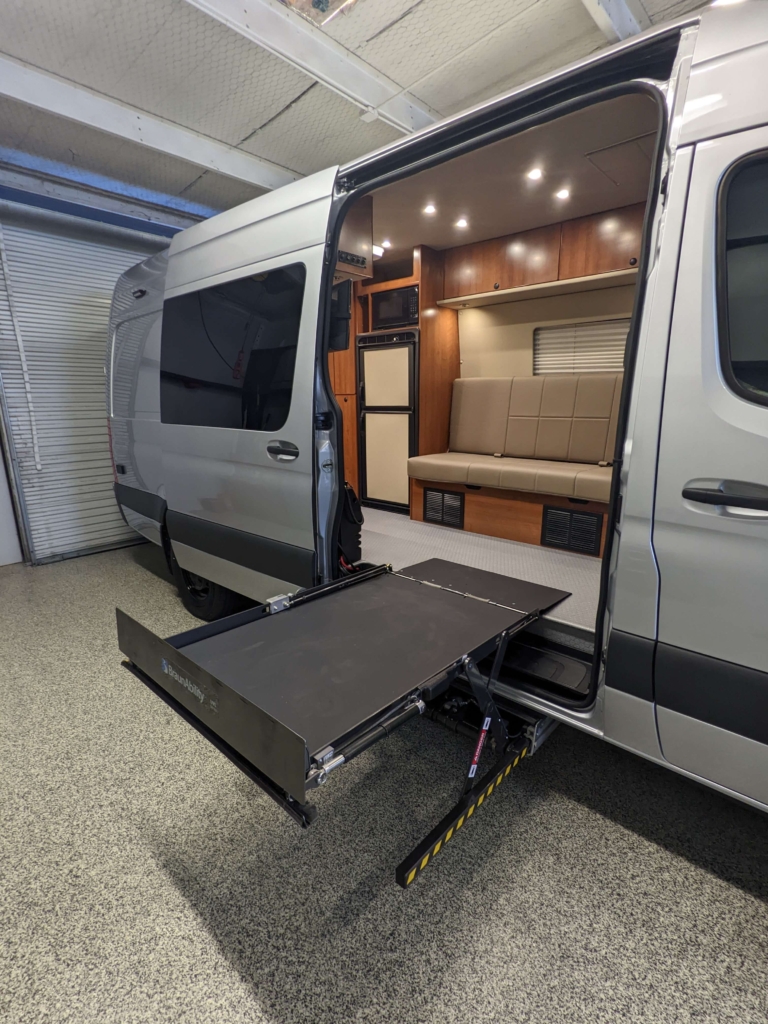
Super Arm Lift
The Super Arm Lift is a unique, space-saving option designed specifically for individuals who want to minimize the amount of space a lift occupies inside the van. Instead of a platform, the Super Arm uses a single arm to lift and swing a wheelchair into the van. This system is ideal for rugged terrain, as it can operate even when the ground is uneven. The arm’s compact design allows for full access through the side door and does not interfere with the front seat’s ability to swivel.
Key Benefits:
-Minimal space requirements inside the van.
-Can be used in uneven terrain, making it perfect for off-road or camping enthusiasts.
-No platform means quicker entry and exit compared to platform lifts.
Drawbacks:
-Limited weight capacity compared to double-arm platform lifts.
-Fewer service options are available due to its specialized nature.
-Typically more expensive than standard platform lifts.
Vehicle Consideration:
The Super Arm Lift is ideal for adventure vehicles like the Ford Transit or Mercedes Sprinter, particularly for users who frequently drive in remote or rugged areas. It’s best suited for those who prioritize off-grid capability and need a lift system that won’t get in the way of other passengers or interior storage. However, being taller than the other lifts, it is more suited for vans with a 6 foot side door opening.
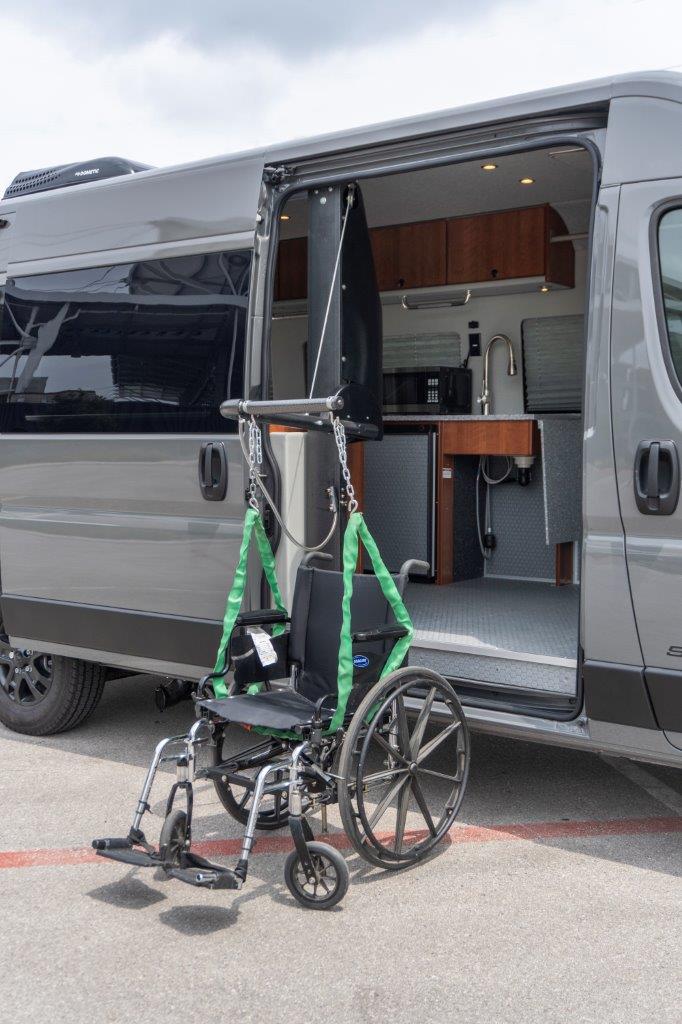
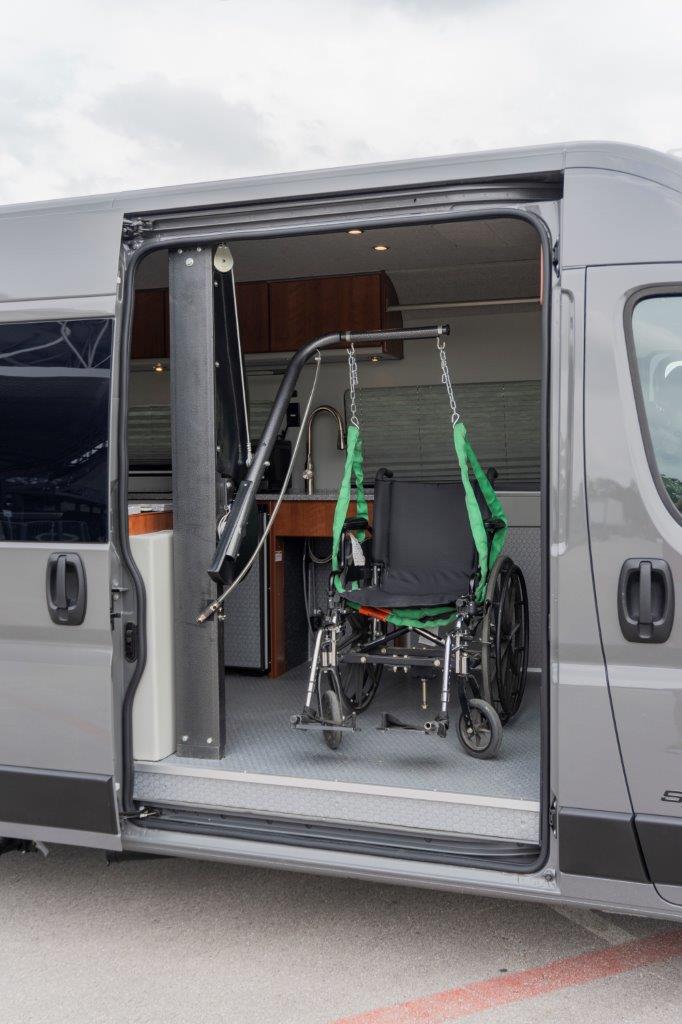
How Are You Transferring to the Cab?
Once inside the van, the next consideration is transferring to the driver or passenger seat. All van models, such as the Sprinter, Transit, and Promaster, are available with swivel seats. These seats can rotate to face the aisle, allowing for easier access from a wheelchair to the driver or passenger position.
For those needing additional support, transfer seats are available. These seats not only swivel but also raise, lower, and slide forward and backward, making it easier to transition from a wheelchair to a standard seat.
How Lift and Transfer Choices Influence Your Vehicle Selection
Each lift type transfer has its technical requirements and will influence your vehicle selection. For instance:
- A single arm lift is more compatible with mid-sized vans that need to balance mobility access with passenger space. This lift will not impede the ability to have a transfer seat in either the driver or passenger side of the vehicle.
- A double arm lift is best suited for larger vehicles with ample interior space, such as the Mercedes Sprinter or Dodge Promaster, and is ideal for heavier mobility devices. Given the large interior footprint of this lift, a passenger-side swivel or transfer seat will not be an option. As a result, other seating options must be incorporated into the build for wheelchair passengers.
- An under vehicle lift requires higher ground clearance, making it ideal for 4×4 models or off-road-capable vans like the Sprinter 4×4. This is not recommended for vehicles with lower ground clearance nor is it recommended if the vehicle is going to be taken off-road. By not restricting seat movement at all, this provides the greatest options for transferring to the cabin of the van.
- The Super Arm Lift is perfect for those prioritizing interior space and off-road capability and works best in adventure vans like the Transit or Sprinter. Like the single arm lift, this lift will not impede the ability to have a transfer seat in either the driver or passenger side of the vehicle. However, being taller than the other lifts, it is more suited for vans with a 6-foot side door opening.
Ready to Begin Your Custom Van Build?
A custom van conversion does not necessarily carry a higher cost than other mobility vehicles. With a custom van, you are making the choices of the features and components that are used in your build and are only paying for what you need and want.
The design consultants at Sportsmobile have experience working with local, state, and federal agencies to help take advantage of all available incentives. This can help maximize refunds and benefits as well as minimize taxes on the vehicle.
By answering these two key questions—how you get into the vehicle and how you transfer to the cab—you’re well on your way to designing a van that fits your lifestyle and mobility needs. At Sportsmobile, we’re here to help turn your dream van into a reality, ensuring every journey is as comfortable, functional, and accessible as possible.



